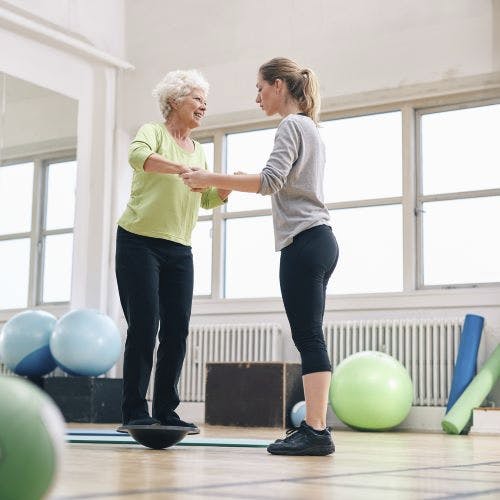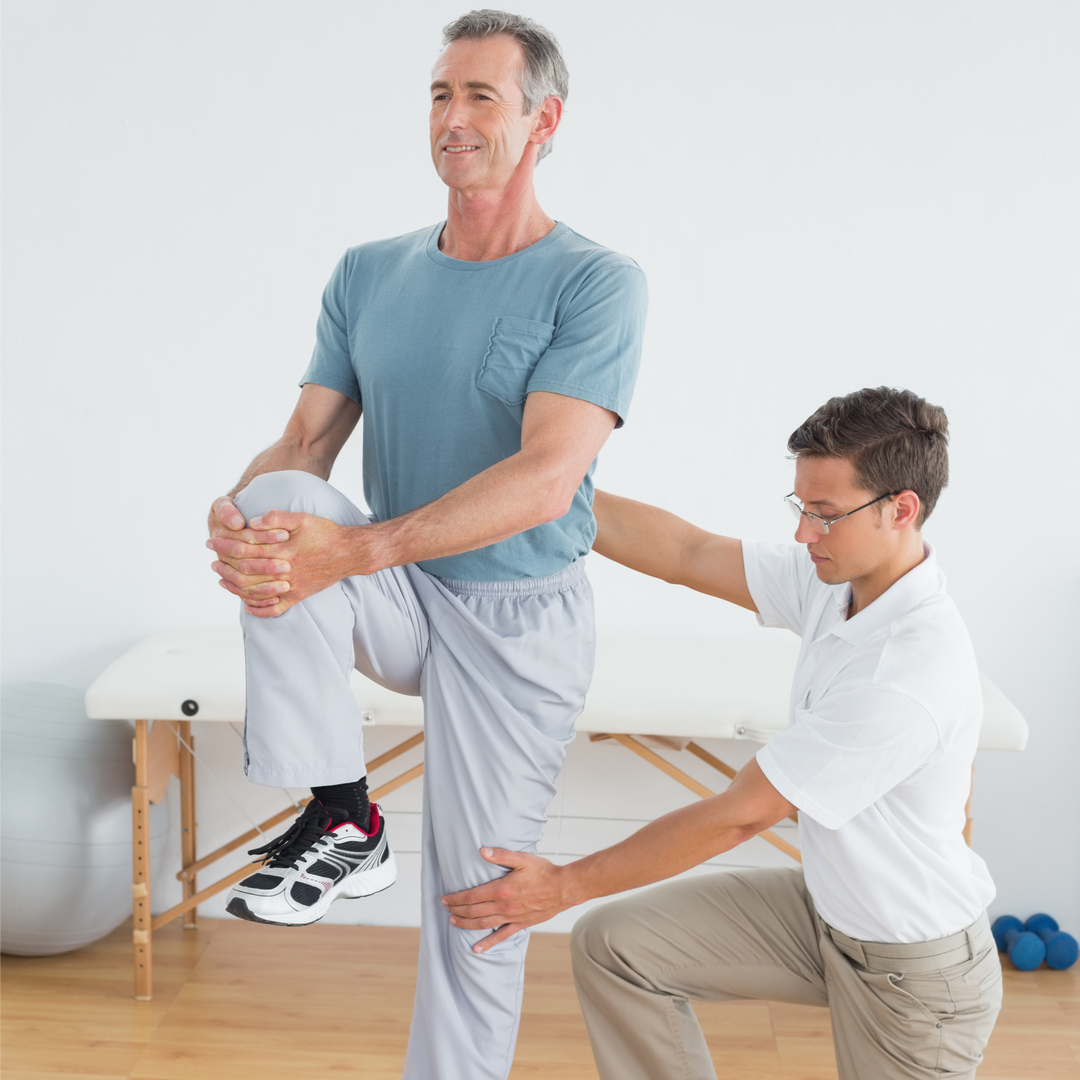Are you having trouble walking, climbing stairs, or standing up from a chair? Is your knee or hip pain interfering with these activities? Are you losing muscle strength because of painful arthritis? Your daily activities require both strength and good balance. Balance problems are extremely common in people with arthritis. Balance problems lead to poor mobility and falls. If you are dealing with hip or knee arthritis, balance exercises are crucial for improving your quality of life.
A Proven Approach: The Otago Balance Exercise Program
The Otago Exercise Program (OEP) is a proven fall prevention program for older adults. The OEP is especially beneficial for adults 75 years and older. A 2018 clinical trial looked at the OEP to improve balance, fear of falling, and fall risk in older adults with knee arthritis.
Older adults performed the OEP 3 times per week in their own homes. After 6 months, people who consistently performed their exercises showed significant improvements in balance and reduced their fear of falling. This study provides a framework to build your home balance exercise program.
The Basics of Balance Exercise

Balance exercises can be easily performed in your own home or under the guidance of your physical therapist. For the best results, perform balance exercises daily. At a minimum, start with 3 times per week.
These exercises will only take you about 20 minutes to perform. This investment in time and energy is well worth the reward. For safety, start by performing each exercise close to a wall or counter in case you need some extra support. It is best to wear sneakers or walking shoes while exercising.
Toe and Heel Walking
Stand on your tiptoes. Walk forward 10 steps without allowing your heels to touch the floor. Turn your body around and try walking on your heels for the same 10 steps. Do not allow your toes to touch the floor. Perform 5 laps each on your toes and heels. If this is not difficult for you, try walking backward on your toes and backward on your heels.
Tandem Walking
You may notice that your feet are spaced further apart when you walk. A wide base gait pattern is one of the early signs of a balance problem. Tandem walking corrects this.
Stand near a wall or counter. Walk with a narrow base of support, like you are on a “tightrope”. Your heel of one foot touches the toes of your other foot with each step. This is a challenging exercise. When starting, it is okay to use one hand or finger on a counter for light support.
Sidestepping
Stand facing a wall or counter. Space your feet about 2 inches apart with your toes pointing straight ahead. Focus your eyes forward with your head up. Walking with your head down and eyes on your feet is one of the early signs of a balance problem. Take 5 small steps to the right. Do not allow your feet to touch. Keep your chest and shoulders up. After 5 steps to the right, take 5 steps to the left. Perform 5 laps right to left and left to right.
Carioca
Carioca’s are a progression of the sidestepping exercise. With this exercise, alternate front and back cross-over steps. It is best to start holding on to a counter or wall until you become confident with this exercise. This exercise requires adequate flexibility in your hips and legs. If this is a problem for you, incorporate some stretching exercises into your routine.
Shuttle Walk
Walking with changes of direction can be challenging for people with balance problems. The shuttle walk helps with this problem.
Place 4 cones or objects (shoes are fine) on the floor about 5 to 10 feet apart. Stand at the first cone and walk to the second cone. Stop at the second cone and then walk backward to the first cone. Next, walk to the third cone. Stop. Walk backward to the first cone. Finally, walk to the fourth cone. Stop. And walk backward to the first cone. Complete this cycle 5 times.
Get Started with Improving Your Balance
Arthritis pain causes you to change your daily activities and lifestyle. You may start to avoid long walks, avoid stairs, or limit your social outings because of pain. The more you change or reduce your activities, the weaker your muscles become and the more your balance is affected. You can change this. Home strengthening exercises and balance exercises are the safest and most effective ways to overcome limitations from arthritis.
If you don’t feel like you can do it alone, call your physical therapist. The physical therapists at BSR are committed to helping you move without pain. Exercise is the first treatment for arthritis before resorting to drugs, shots, or surgery. We want to help you take back control of your quality of life.


